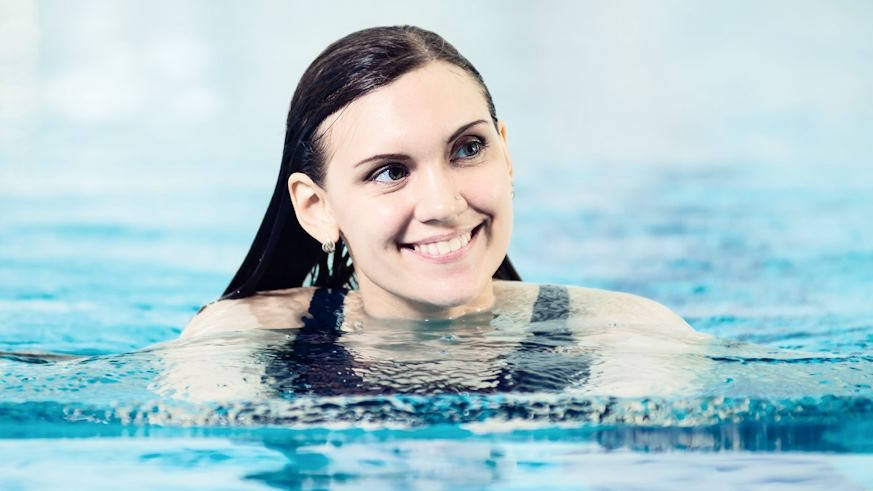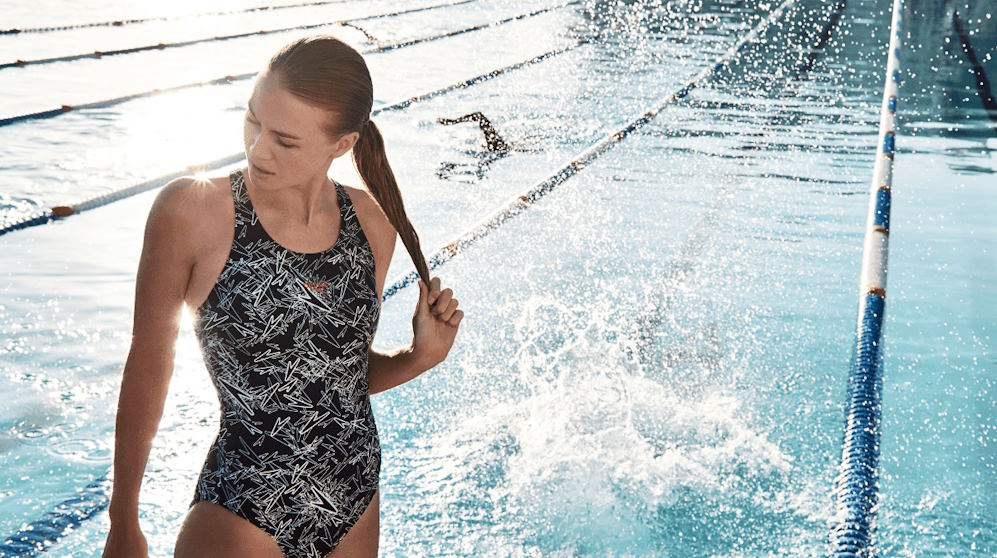Whether you’re a casual swimmer or a competitive athlete, you know that the pool can be tough on your hair. Chlorine and saltwater can leave your locks feeling dry, brittle, and weighed down. But don’t worry—taking a few simple steps right after you get out of the water can make all the difference.
Rinse Hair Immediately
Imagine your hair as a sponge soaking up every bit of water you swim in. Just like you’d wring out a sponge to get rid of excess water, rinsing your hair right after swimming helps remove chlorine or salt before it can do any more damage. It’s a quick and easy step, but it makes a big difference.
Head to the shower as soon as you can after your swim and rinse your hair with lukewarm water. Don’t just rinse the surface—make sure the water gets all the way through your hair. Think of it as giving your hair a fresh start, washing away the remnants of your swim before moving on to the next step in your hair care routine.
Use a Clarifying Shampoo
After you’ve rinsed your hair, it’s time to bring out the big guns: clarifying shampoo. This special type of shampoo is like a superhero for your hair, designed to get rid of the build-up of chlorine and salt. But don’t worry, you don’t need to use it every day—just a couple of times a week will do the trick.
When selecting a clarifying shampoo, visit a hair advisor to find one that’s gentle and effective for your hair type. You want something that will clean your hair without stripping it of its natural oils. It’s like finding the right balance in a recipe—you need enough of the right ingredients to get the result you want without overdoing it. Apply the shampoo to wet hair, work it into a lather, and then rinse thoroughly.

Apply a Deep Conditioning Treatment
Okay, let’s talk about deep conditioning. After a swim, your hair might be feeling a bit like a sponge that’s been squeezed and dried out. A deep conditioning treatment is like giving that sponge a good soak to bring it back to life.
Deep conditioners are packed with moisture and nutrients that your hair needs to recover. You can use a hair mask or a deep conditioning treatment from the store, or even make your own at home. Apply the conditioner from roots to ends, and let it sit for about 10-15 minutes. You can use this time to relax and unwind—maybe read a book or catch up on your favorite show. Rinse it out, and your hair will feel softer and more manageable.
Moisturize with a Leave-In Conditioner
Once you’ve deep conditioned your hair, it’s time for the next step: leave-in conditioner. Think of this as a final layer of protection for your hair. It’s like applying sunscreen after a swim—an extra step that helps keep everything in good shape.
A leave-in conditioner adds extra moisture, helps detangle, and keeps your hair smooth. Just apply a small amount to damp hair and work it through with your fingers or a wide-tooth comb. This step will help keep your hair looking great between swims and make it easier to style.
Avoid Heat Styling
After all the care you’ve put into your hair, the last thing you want to do is damage it with heat styling. Think of heat styling as putting your hair through an extra workout—it’s tough on hair that’s already been through a lot.
Instead of reaching for the blow dryer or straightener, let your hair air dry. If you need to style it, try braiding it while it’s damp for some natural waves, or go for a simple updo. Embrace your natural look and give your hair a break from the heat.

Protect Your Hair for Future Swims
Planning to hit the pool or beach again soon? Let’s set you up for success with some pre-swim hair care. Just like you’d use sunscreen to protect your skin, there are ways to protect your hair before you even get in the water.
Maintain a Healthy Hair Routine
Finally, let’s talk about keeping your hair in great shape all the time, not just after swimming. Regular hair care is like maintaining a garden—you need to keep up with it to see the best results.
Make sure you’re eating a balanced diet, staying hydrated, and following a good hair care routine. Regular trims, gentle brushing, and using quality products can all help keep your hair healthy and strong. Think of these habits as daily upkeep for your hair’s well-being.

